Drosera subhirtella Planch.
Drosera subhirtella is named from the Latin sub (somewhat) and hirtellus (hairy, but less than hirsute), in reference to its all-over glandular indumentum.
Western Australia – known from Northam to Merredin; south to Beaufort River; Katanning; Newdegate and Lake King; north to Hill River region; Wongan Hills; Carnamah and Miling.
Grows in white sand heath with Banksia species; yellow sand on heathland; quartzite sand plains; white lateritic sand or mallee sand; on heathland in ironstone gravels, or light brown loam with ironstone in Allocasuarina and Leptospermum woodland; and in loam soils on the aprons of granite outcrops where the water run-off is greatest.
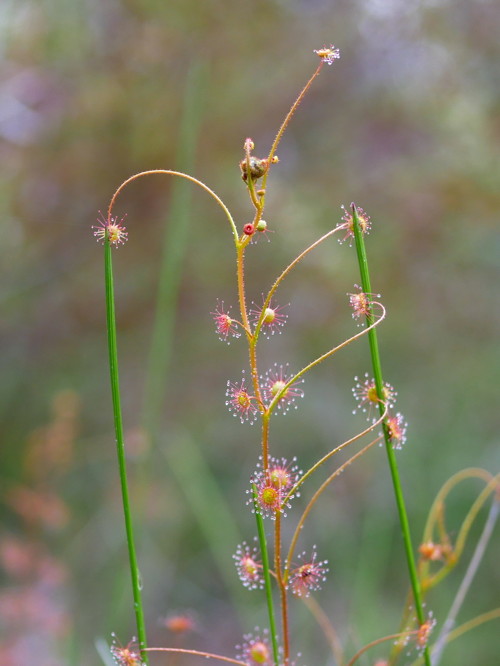
Drosera subhirtella. Photo © Thilo Krueger.
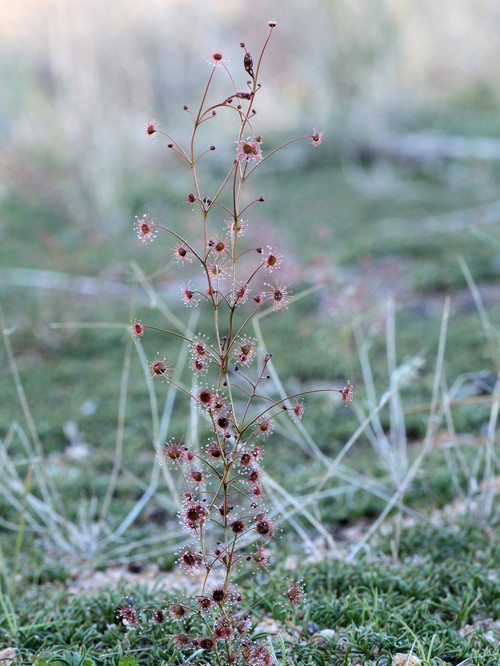
Drosera subhirtella. Photo © Richard Nunn.
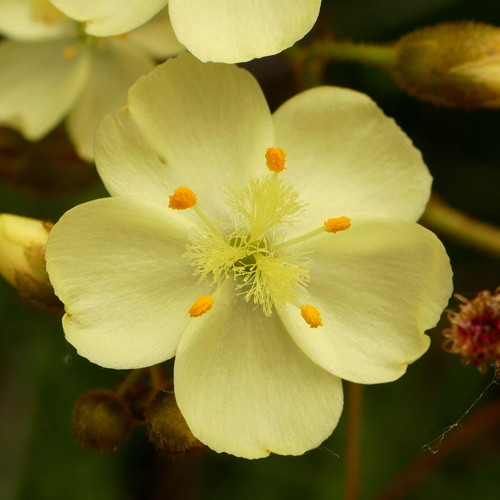
Drosera subhirtella. Photo © Thilo Krueger.
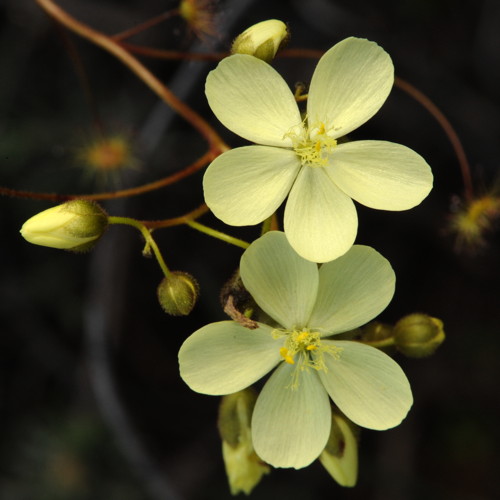
Drosera subhirtella. Photo © Richard Nunn.
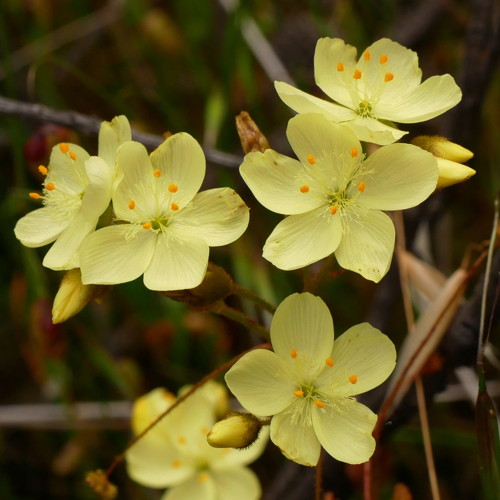
Drosera subhirtella. Photo © Thilo Krueger.
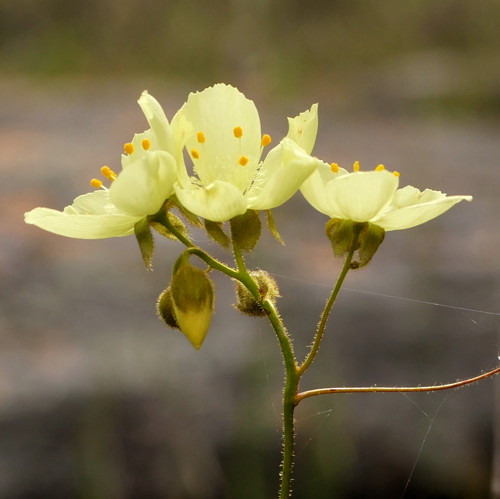
Drosera subhirtella. Photo © Thilo Krueger.
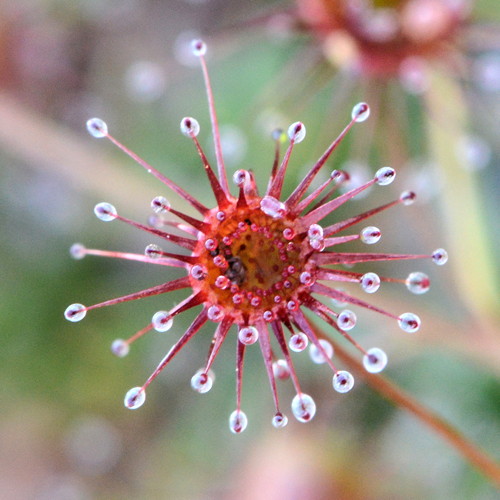
Drosera subhirtella. Photo © Richard Nunn.
Drosera sulphurea Lehm.
The epithet, sulphurea, is derived from the Latin sulphureus (like sulphur, pale, clear yellow), in reference to the colour of its petals.
Western Australia – Albany; Denmark; Scott River region east of Augusta.
Grows in peat or sandy peat on the margins of swamps that rarely completely dry out in summer.
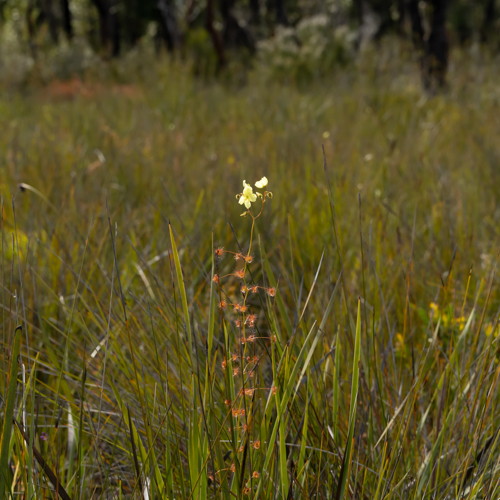
Drosera sulphurea. Photo © Boaz Ng.
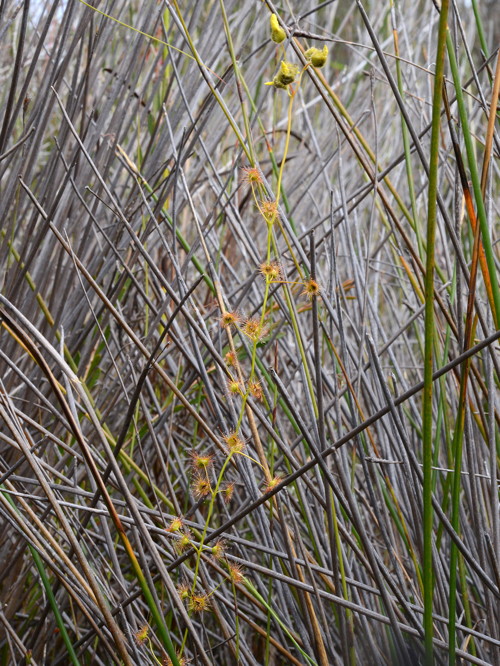
Drosera sulphurea. Photo © Richard Nunn.
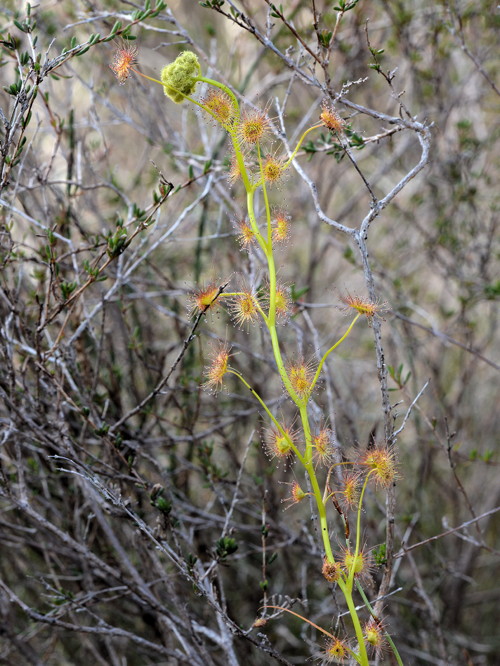
Drosera sulphurea. Photo © Richard Nunn.
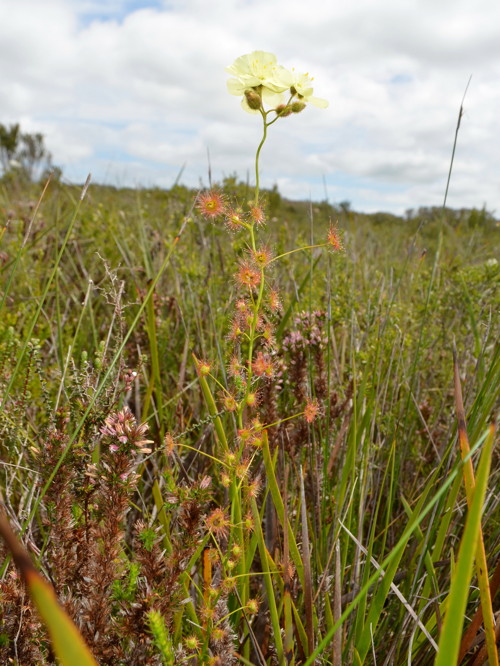
Drosera sulphurea. Photo © Thilo Krueger.
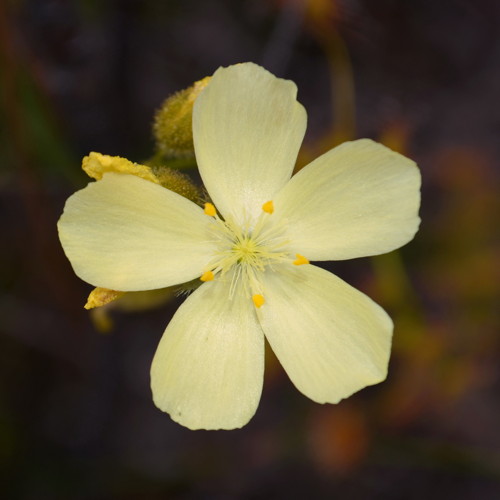
Drosera sulphurea. Photo © Thilo Krueger.
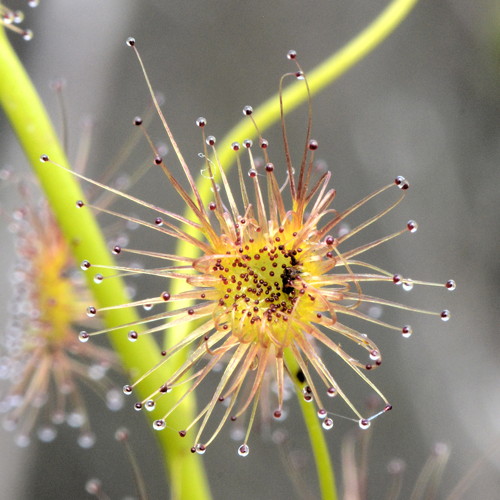
Drosera sulphurea. Photo © Richard Nunn.
Drosera thysanosepala Diels
The epithet, thysanosepala, is derived from the Greek thysanotos (fringed) and sepalum (sepal), in reference to the distinctive, yellowish green, broadly ovate, apically fimbriate, glabrous sepals of this species.
Western Australia – Cataby; Eneabba; Kalbarri.
Grows in deep sand on heathland amongst small shrubs. All locations dry out in summer.
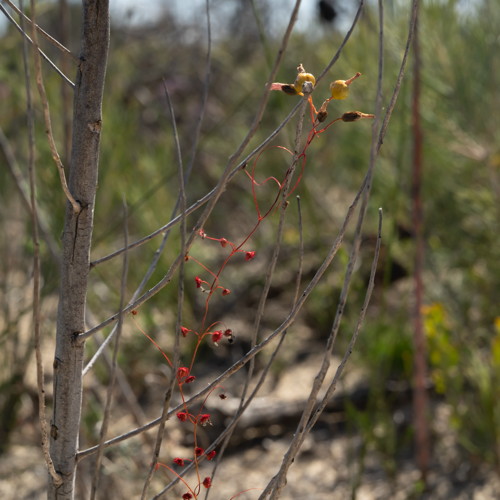
Drosera thysanosepala. Photo © Boaz Ng.
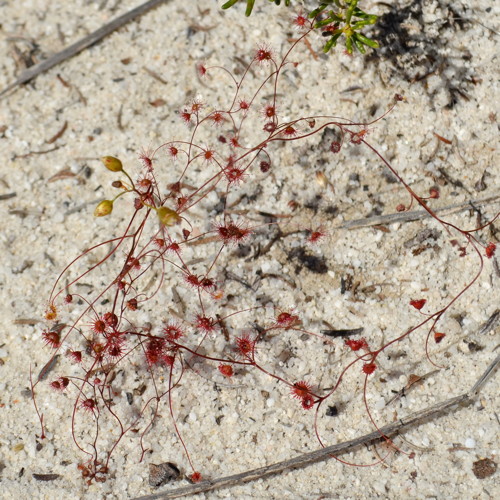
Drosera thysanosepala. Photo © Thilo Krueger.
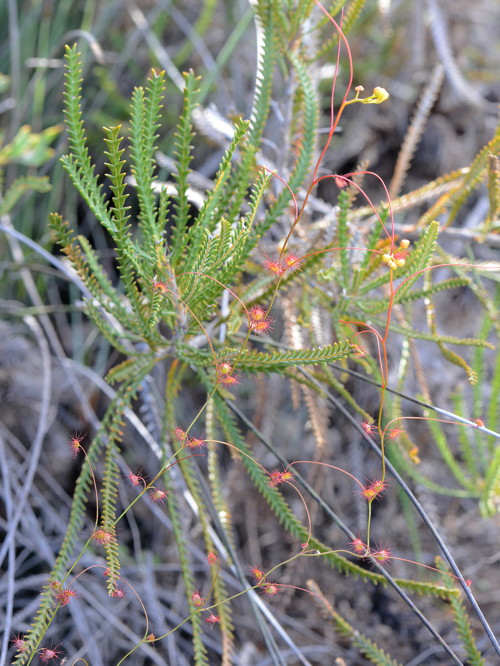
Drosera thysanosepala. Photo © Richard Nunn.
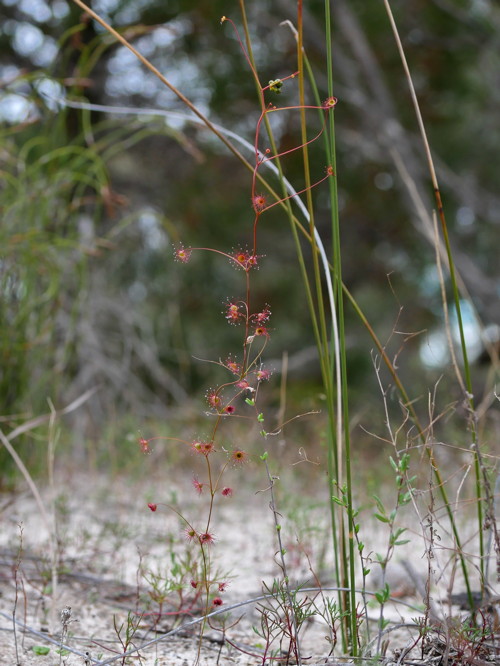
Drosera thysanosepala. Photo © Thilo Krueger.
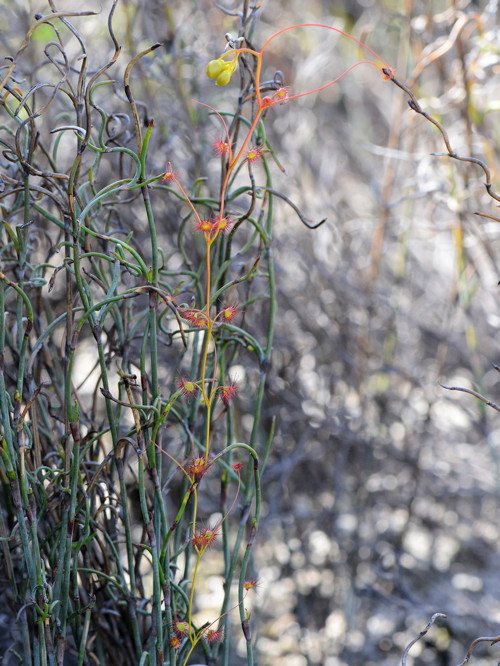
Drosera thysanosepala. Photo © Richard Nunn.
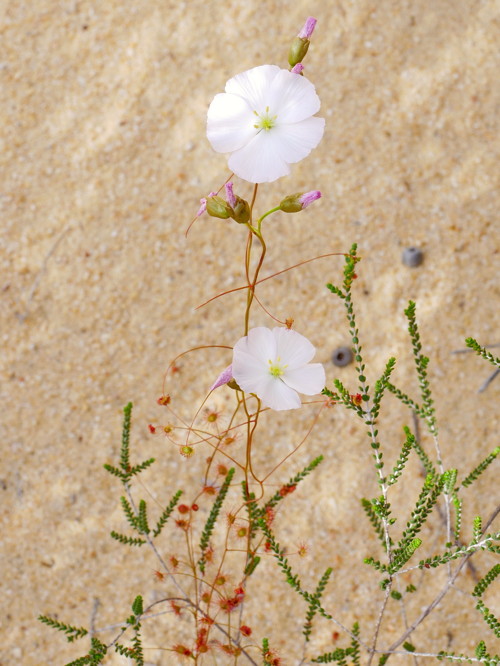
Drosera thysanosepala. Photo © Thilo Krueger.
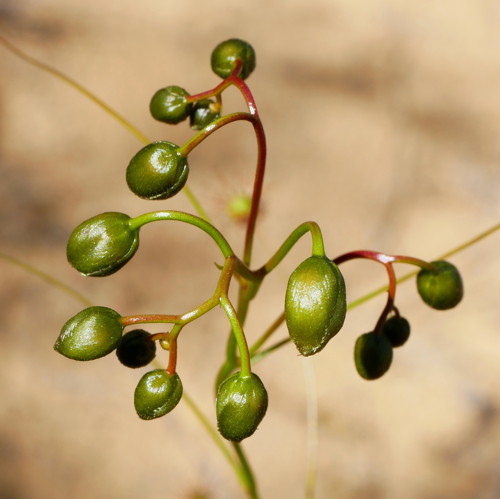
Drosera thysanosepala. Photo © Thilo Krueger.
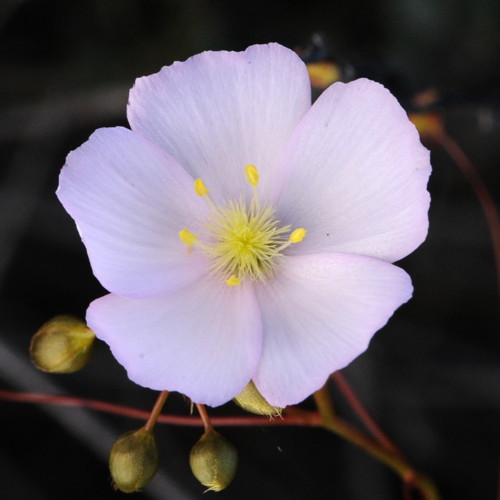
Drosera thysanosepala. Photo © Richard Nunn.
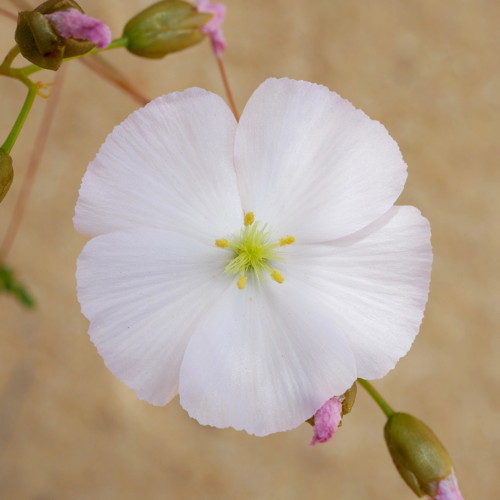
Drosera thysanosepala. Photo © Thilo Krueger.
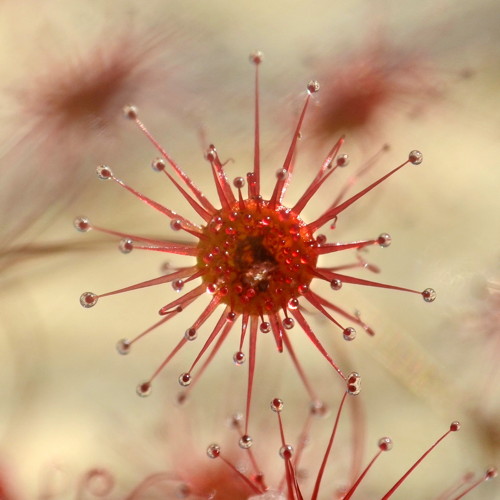
Drosera thysanosepala. Photo © Thilo Krueger.
Drosera tubaestylis N.G.Marchant & Lowrie
The epithet, tubaestylis, is derived from the Latin tuba (trumpet) and stylus (style), in reference to the trumpet shaped styles.
W.A. – Canning Vale; Pinjarra; Yarloop; Busselton; Scott River area.
Grows in peaty sand on the margins of winter-wet swamp flats on the western coastal plain. All locations dry out completely by summer.
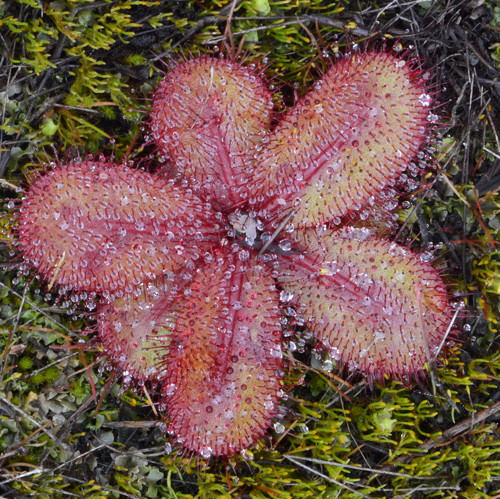
Drosera tubaestylis. Photo © Richard Nunn.
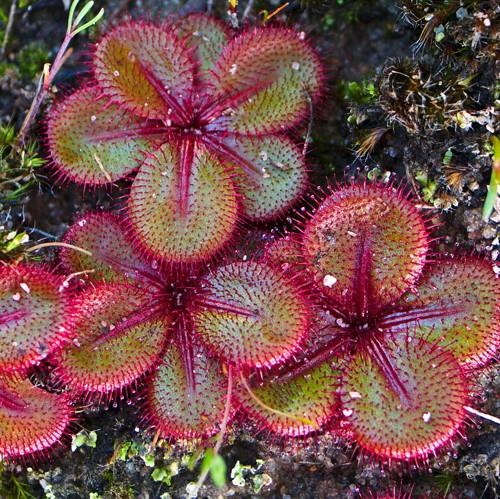
Drosera tubaestylis. Photo © Thilo Krueger.
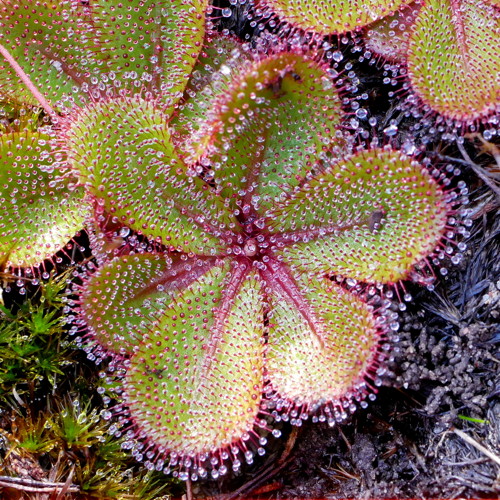
Drosera tubaestylis. Photo © Thilo Krueger.
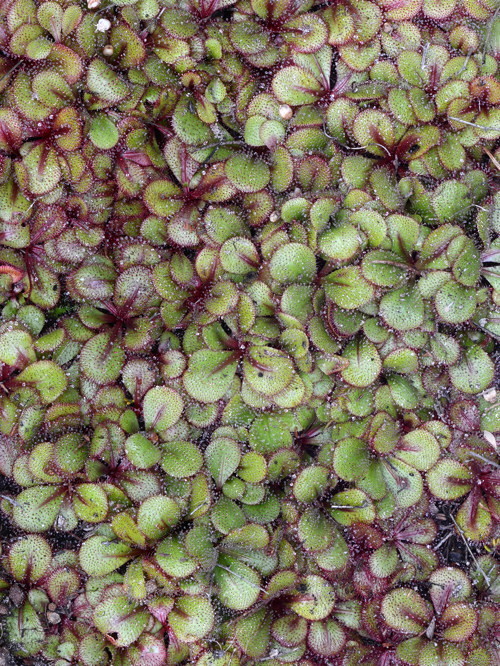
Drosera tubaestylis. Photo © Richard Nunn.
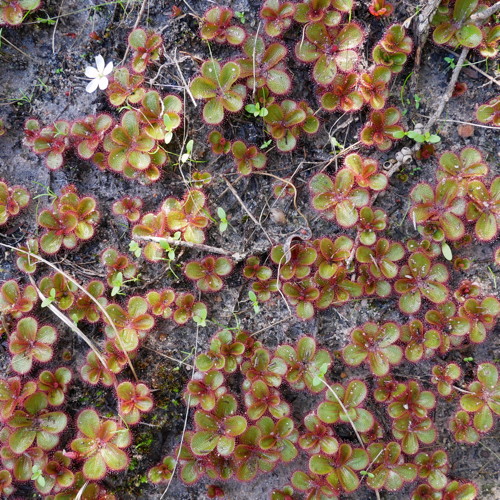
Drosera tubaestylis. Photo © Thilo Krueger.
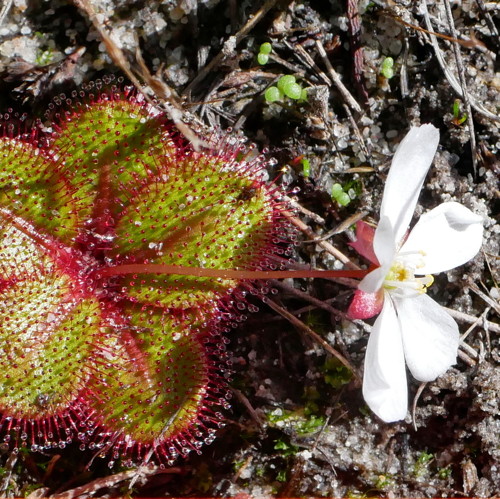
Drosera tubaestylis. Photo © Thilo Krueger.
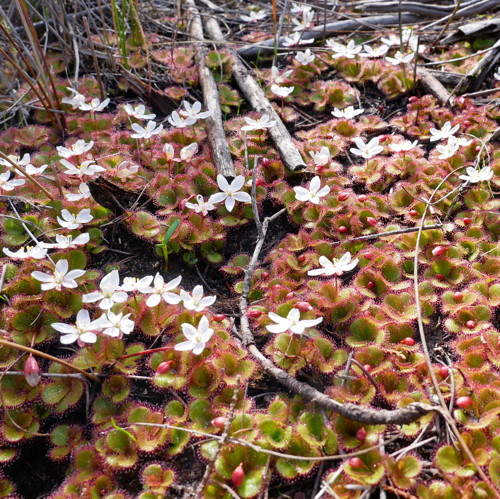
Drosera tubaestylis. Photo © Thilo Krueger.
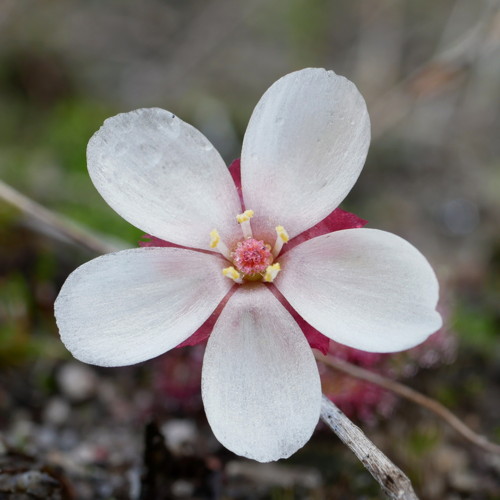
Drosera tubaestylis. Photo © Thilo Krueger.
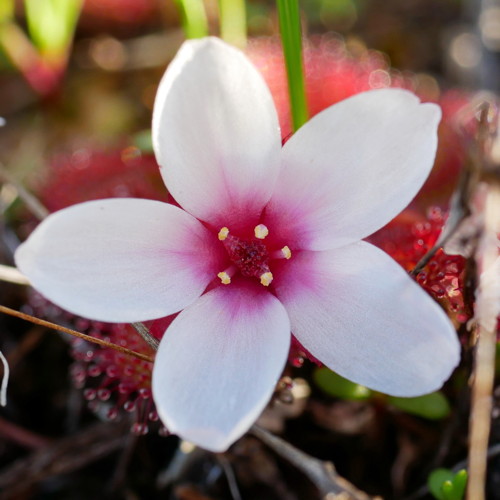
Drosera tubaestylis. Photo © Thilo Krueger.
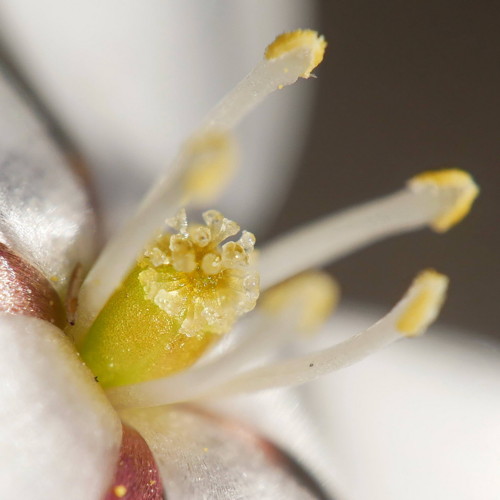
Drosera tubaestylis. Photo © Thilo Krueger.
Drosera whittakeri Planch.
The epithet, whittakeri (as ‘Whittakerii’ Planchon, 1848), honours Joseph Whittaker (1815–1894), a nurseryman from Breadsall, Derbyshire, England. In 1839–1840, Whittaker collected 300 plants from the vicinity of Adelaide, from the southern Lofty Range to Encounter Bay, South Australia. This collection was purchased by W.J. Hooker and is now at Kew.
South Australia – Mt Lofty Ranges; Eden Hill; Cherry Gardens; Goolwa; Talisker; Encounter Bay; Kangaroo Island.
At the type location on Parsons Beach, Encounter Bay, it grows in white sand on heathland overlooking the ocean; in remnant open woodland of Eucalyptus cosmophylla, Allocasuarina pusilla and Lepidobolus drapeticolus in sandy soils near the coast; in sandy white soils at Hindmarsh Tiers; in red, clayey loam with laterite gravels at Talisker.
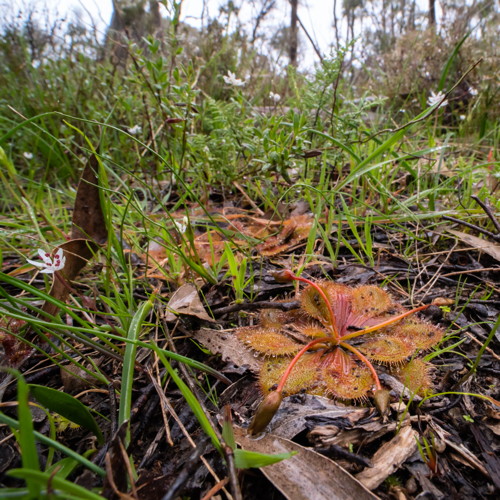
Drosera whittakeri. Photo © Boaz Ng.
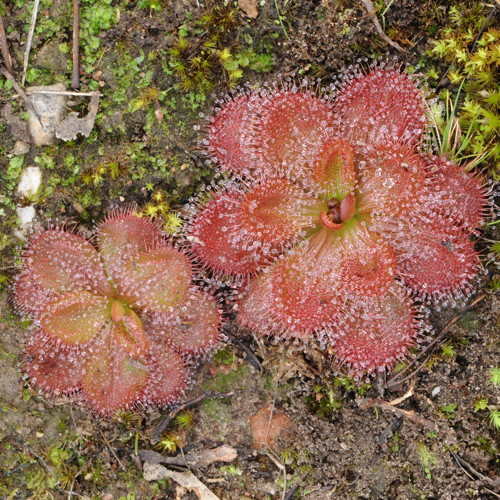
Drosera whittakeri. Photo © Richard Nunn.
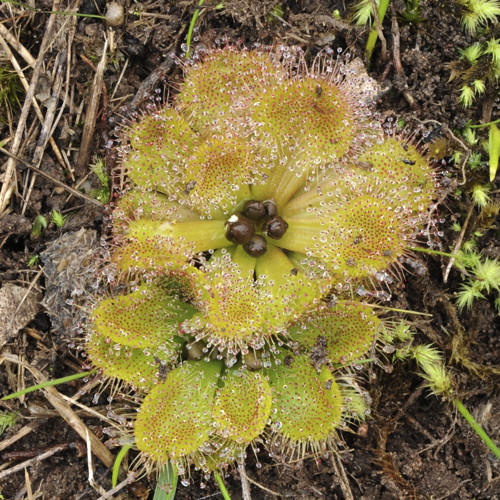
Drosera whittakeri. Photo © Richard Nunn.
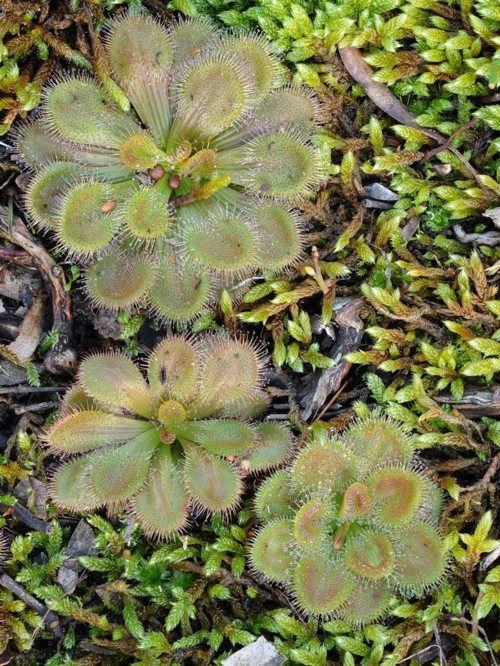
Drosera whittakeri. Photo © Richard Nunn.
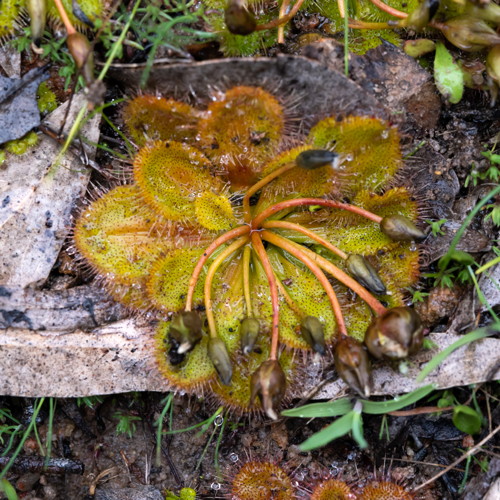
Drosera whittakeri. Photo © Boaz Ng.
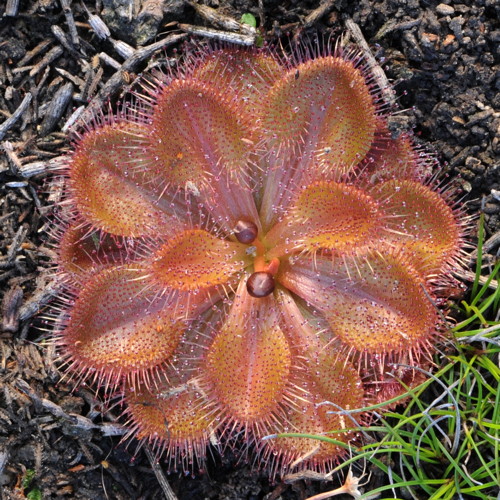
Drosera whittakeri. Photo © Richard Nunn.
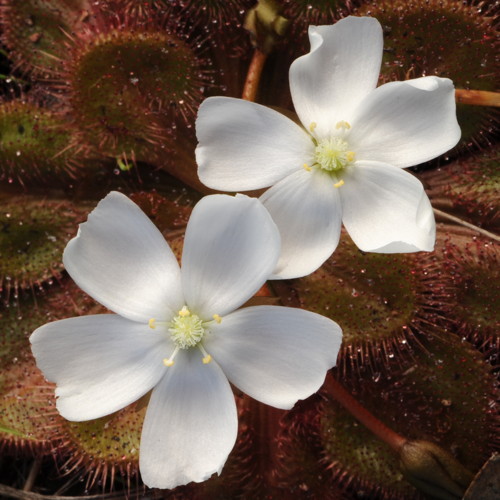
Drosera whittakeri. Photo © Richard Nunn.
Drosera yilgarnensis R.P.Gibson & B.J.Conn
The epithet, yilgarnensis, is derived from the aboriginal word yilgarn (white stone, or quartz) and the Latin suffix -ensis (native of). The Yilgarn Craton in Western Australia is one of the oldest ancient landscapes still preserved on Earth. This species occupies the skeletal soils on the aprons of granite outcrops and is common at many locations throughout the Shire of Yilgarn, a 30,720 km2 area of the southern Yilgarn Craton.
Western Australia – Hyden; Holt Rock; Mt Madden; Peak Charles; Victoria Rocks; Kulin; Dundas; Coolgardie.
Grows in loam washes on the aprons of granite outcrops in outer wheat-belt and goldfield areas.
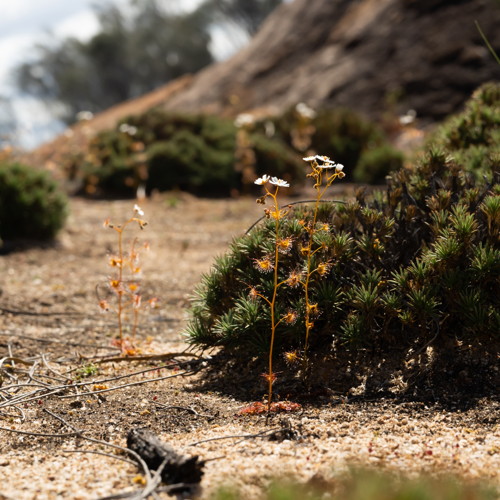
Drosera yilgarnensis. Photo © Boaz Ng.
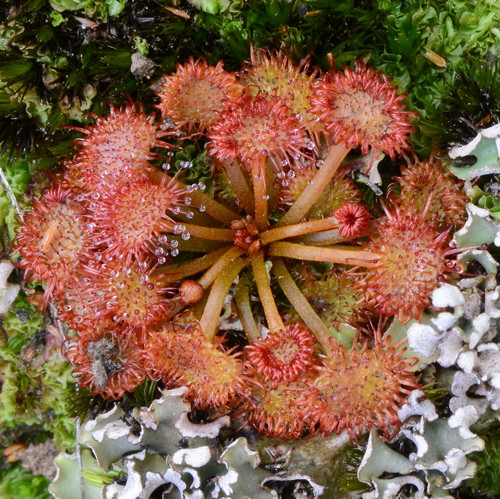
Drosera yilgarnensis. Photo © Richard Nunn.
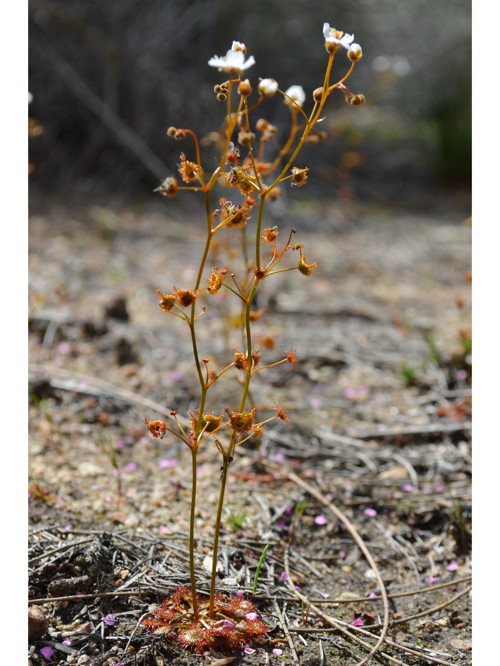
Drosera yilgarnensis. Photo © Thilo Krueger.
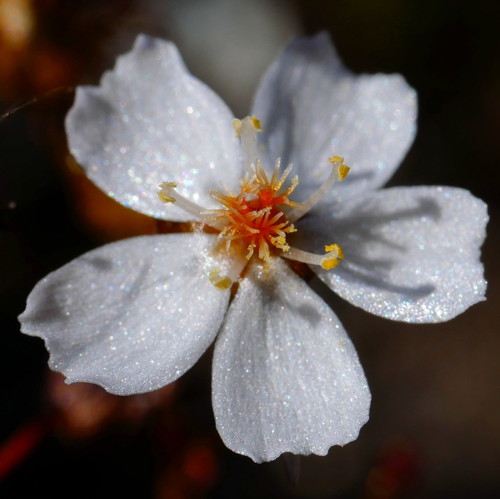
Drosera yilgarnensis. Photo © Thilo Krueger.
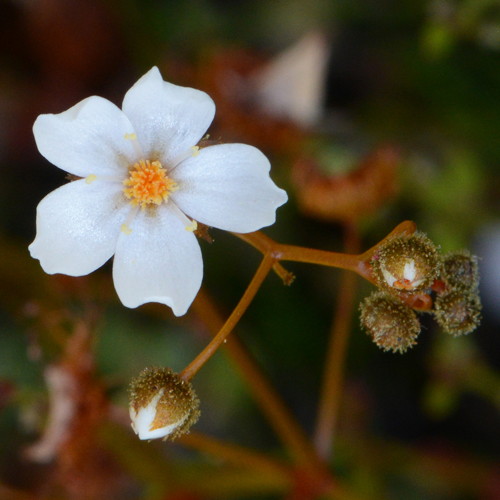
Drosera yilgarnensis. Photo © Richard Nunn.
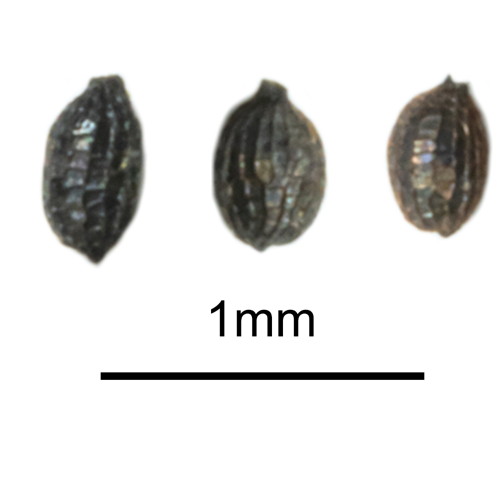
Drosera yilgarnensis. Photo © Boaz Ng.
Drosera zigzagia Lowrie
The Latinised specific epithet, zigzagia, describes the flexuose, ‘zigzag’ manner in which the stem of the plant angles in one plane from side to side.
Western Australia – known from Lake Altham, north of Pingrup and south of Kuender, ca. 40 kilometres to the north-northeast, Lake Hurlstone, ca. 100 kilometres further northeast, and at Lake Seabrook, 190 kilometres further north.
Occurs in salt-free, light brown (white on the surface) loamy sand on the slightly higher shore margins above the flood level of lakes and salt pans.
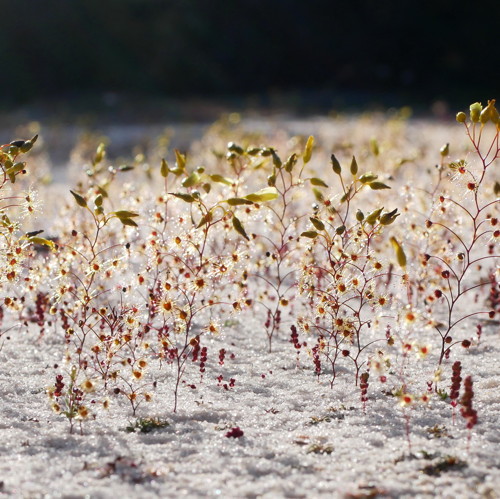
Drosera zigzagia. Photo © Thilo Krueger.
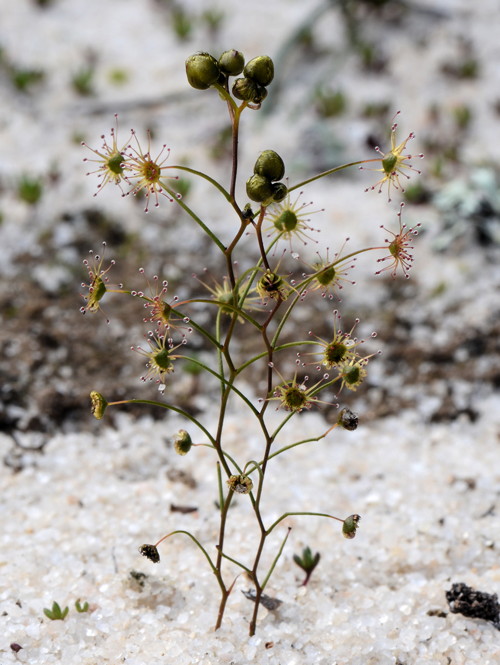
Drosera zigzagia. Photo © Richard Nunn.
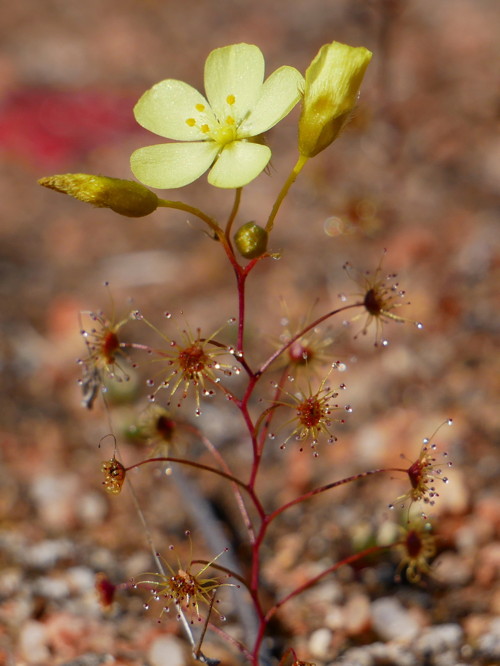
Drosera zigzagia. Photo © Thilo Krueger.
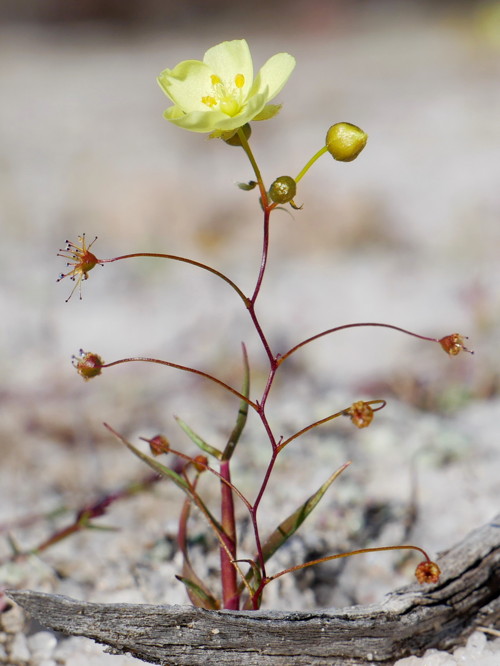
Drosera zigzagia. Photo © Thilo Krueger.
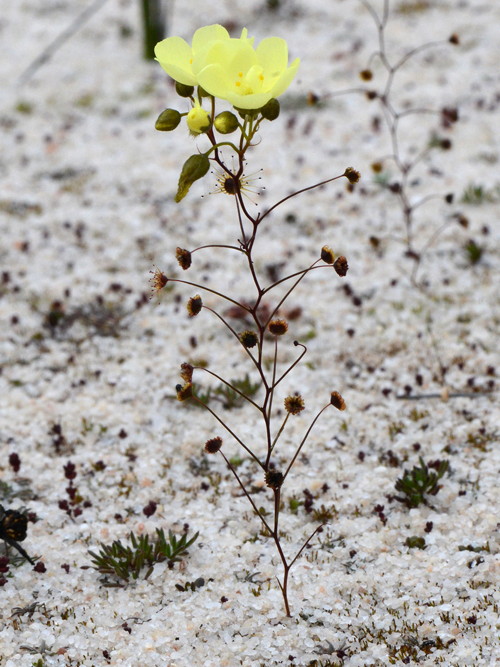
Drosera zigzagia. Photo © Richard Nunn.
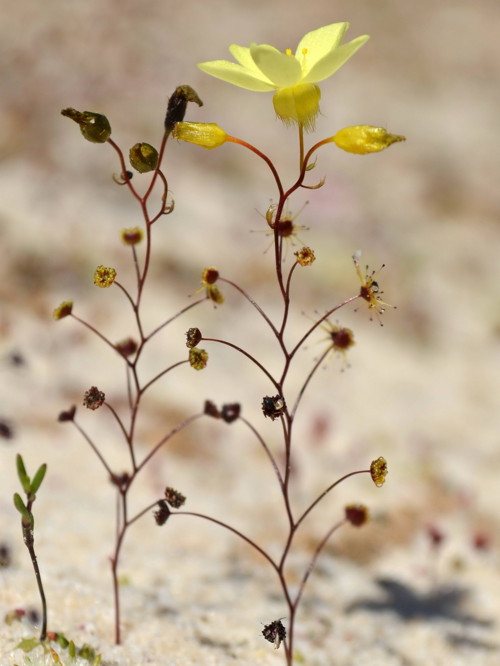
Drosera zigzagia. Photo © Thilo Krueger.
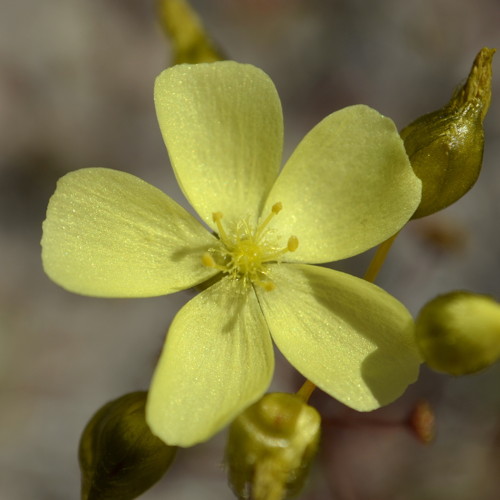
Drosera zigzagia. Photo © Thilo Krueger.
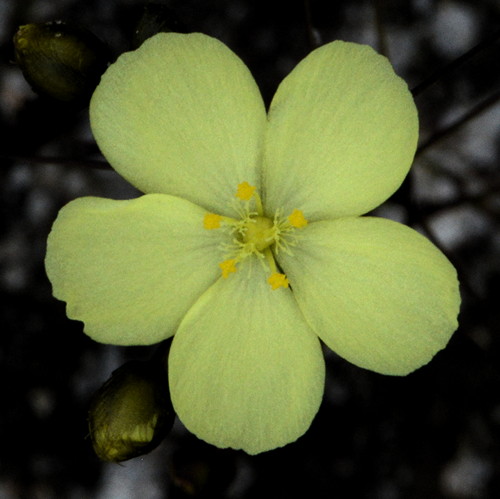
Drosera zigzagia. Photo © Richard Nunn.
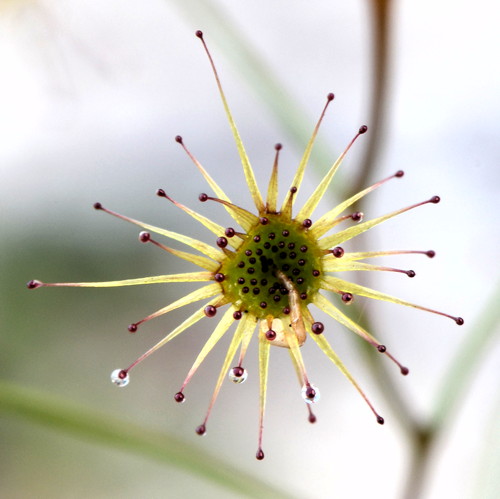
Drosera zigzagia. Photo © Richard Nunn.
Drosera zonaria Planch.
The epithet, zonaria, is derived from the Latin zonarius (belonging to a girdle, zone), in reference to the red colour around the margins of the leaves.
Western Australia – Perth; Wongan Hills; Esperance.
Grows in deep sand amongst low shrubs on heathland. Also grows in open woodland in similar soils.
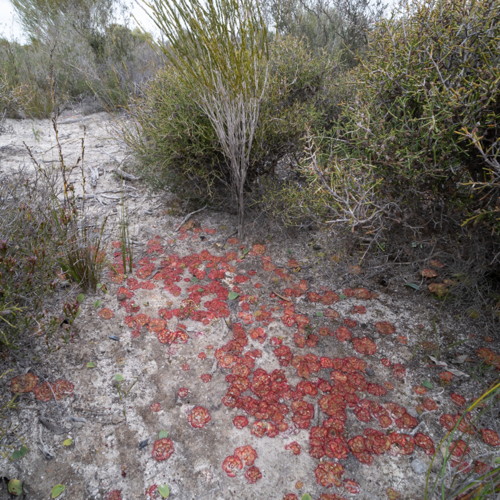
Drosera zonaria. Photo © Boaz Ng.
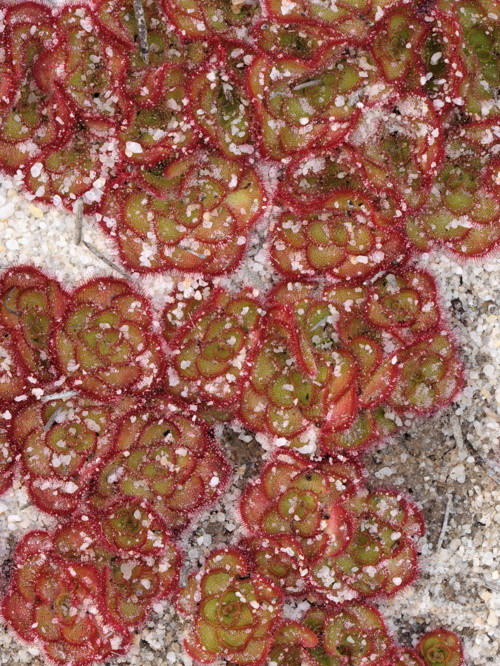
Drosera zonaria. Photo © Richard Nunn.
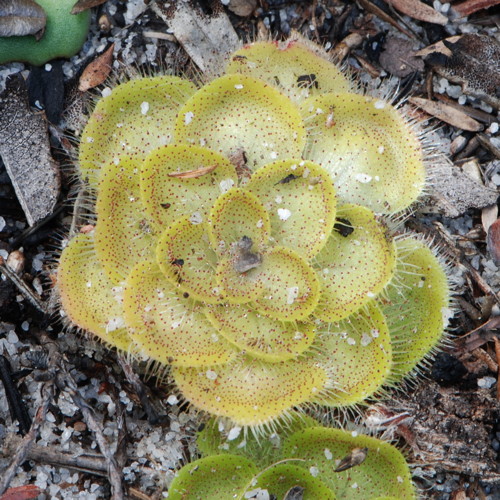
Drosera zonaria. Photo © Richard Nunn.
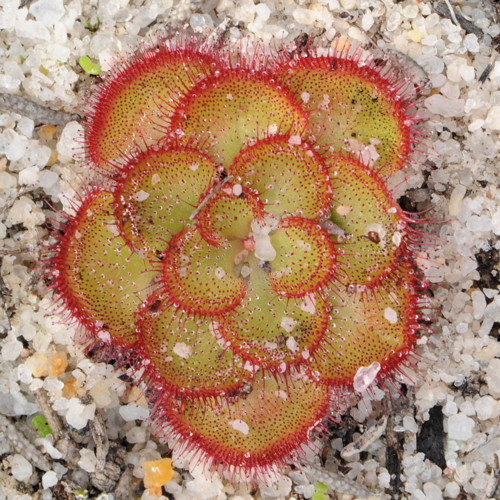
Drosera zonaria. Photo © Richard Nunn.
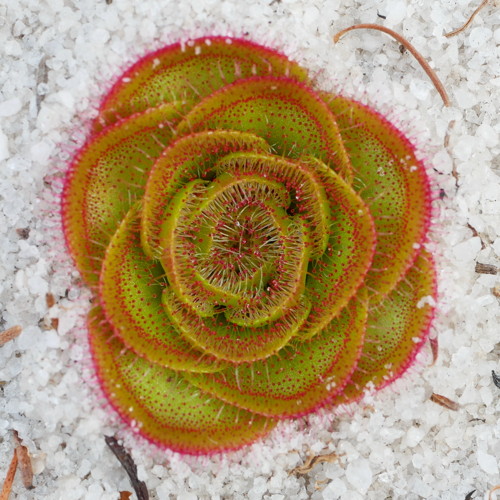
Drosera zonaria. Photo © Thilo Krueger.
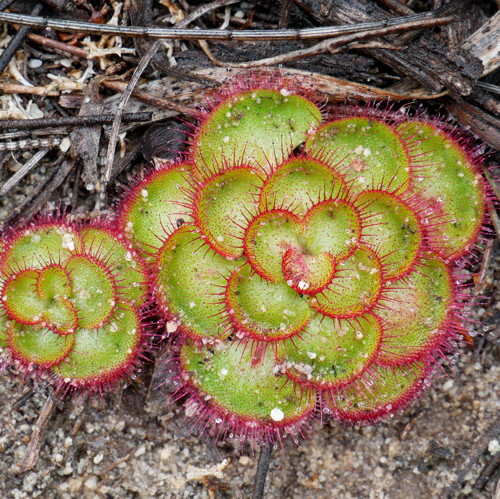
Drosera zonaria. Photo © Thilo Krueger.
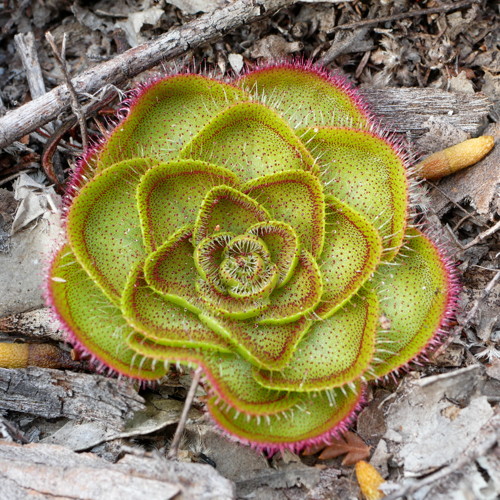
Drosera zonaria. Photo © Thilo Krueger.
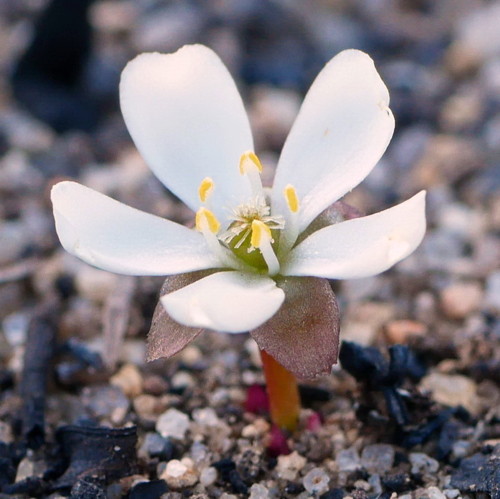
Drosera zonaria. Photo © Thilo Krueger.
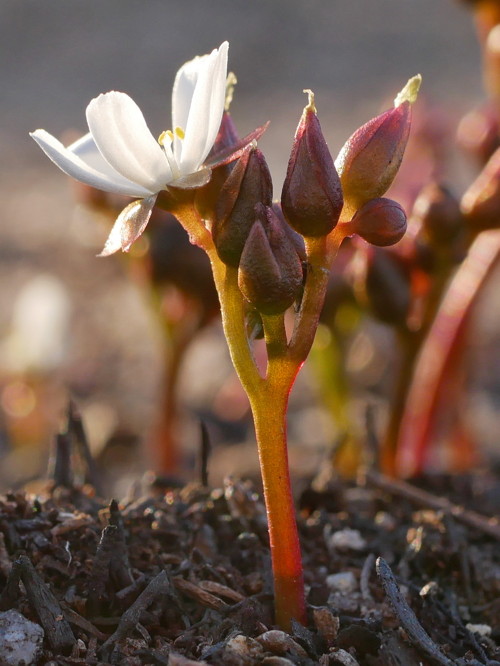
Drosera zonaria. Photo © Thilo Krueger.
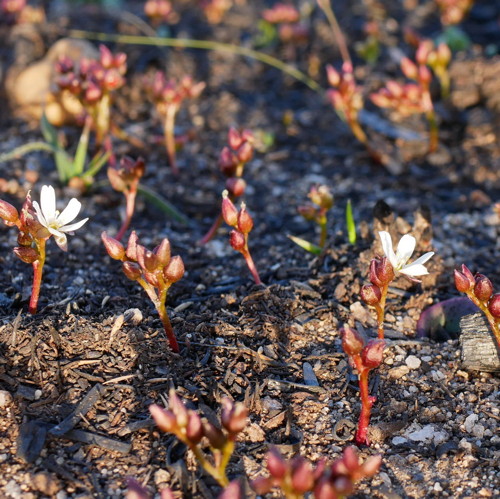
Drosera zonaria. Photo © Thilo Krueger.
